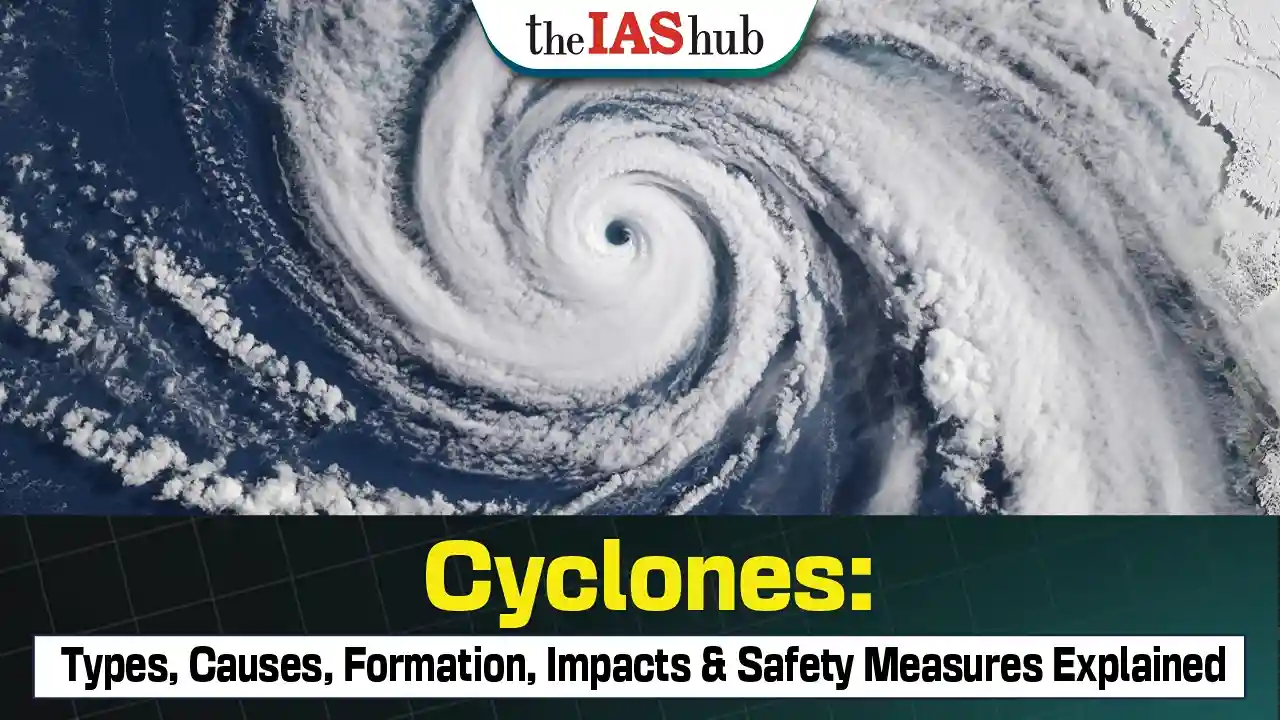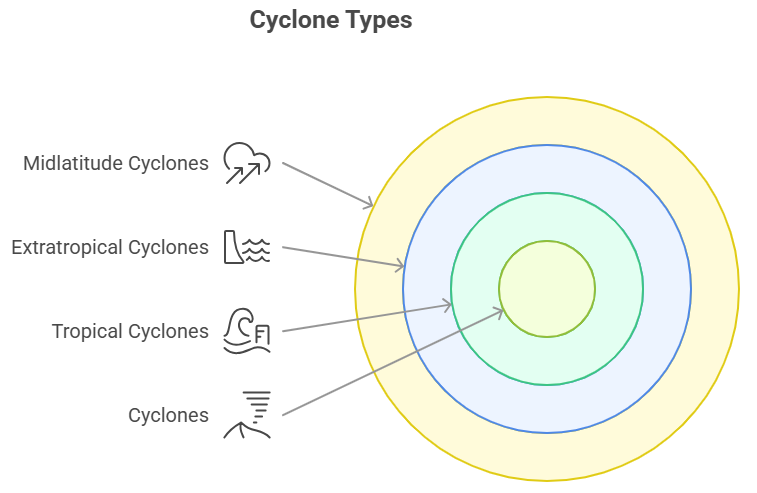Know about cyclones—types, causes, formation, recent examples, and their devastating impacts. Learn about safety measures, early warning systems, and how climate change affects cyclone intensity. Stay informed and prepared.


A cyclone is a large, rotating storm system with low pressure at its center. Cyclones can form in any ocean basin, but they are most common in the tropics. Cyclones can cause a variety of hazards, including strong winds, storm surges, and heavy rainfall.

As a cyclone develops, it undergoes different stages, including tropical depression, tropical storm, and eventually reaching hurricane/typhoon/cyclone intensity. The warm ocean waters provide the energy needed for the cyclone to strengthen, and the rotation of the Earth causes the system to spin and develop a distinct eye at its center.

Recent Cyclones
|
It's important to note that cyclones are natural disasters that require careful monitoring, preparedness, and coordinated responses from governments, communities, and individuals to minimize the potential damage and ensure the safety of those in their path.
Climate change is predicted to increase the frequency and intensity of extreme weather events, including cyclones. Therefore, continuous investment in research and development, capacity building, climate-resilient infrastructure, and proactive policy-making is essential for India to navigate towards resilience against the growing threat of cyclones. Emphasizing a multidisciplinary and holistic approach encompassing technology, environmental management, and community engagement is critical to combat the cyclone menace and safeguard the lives and livelihoods of millions of Indians.


Refine your answer writing skills and elevate your UPSC preparation with personalized support and expert feedback.
Fill out the form to get started with the program or any other enquiries !








Are you dreaming of becoming an IAS officer? Then, IAShub can be your best guide. It is one of the Best IAS Coaching in Delhi. Many students who want to clear the UPSC exam join IAShub for learning. The institute gives both online and offline classes. Their teachers are experienced and helpful. They easily explain every topic. Students also get notes, tests, and tips to do well in the exam.
IAShub is in Delhi and is trusted by many UPSC students. It offers coaching for every part of the UPSC exam – Prelims, Mains, and Interview. The classes are simple and easy to understand. The teachers are experts and guide students in the right way. IAShub is also known for its helpful notes, test series, and answer-writing practice. IAShub is the best coaching in Delhi and also gives UPSC Online Classes. This helps students from any place in India to learn. The online classes are live and also recorded. So, students can watch them anytime. These classes cover the full UPSC syllabus.
Here are some important services provided by IAShub:
The UPSC Civil Services Exam has three parts:
This exam is tough, but with the right guidance, it becomes easy to manage. Students must study smart and stay regular.
IAShub supports students from the beginning to the end. It gives the right books, tests, and notes. The classes are easy to follow, and the teachers are always ready to help. Students get personal doubt sessions too. The test series and answer checking help students learn where they need to do better. Also, free study materials save time and money.
IAShub also guides students during the final stage – the interview. Experts take mock interviews and give useful tips. This full support makes IAShub one of the best IAS coaching in Delhi.